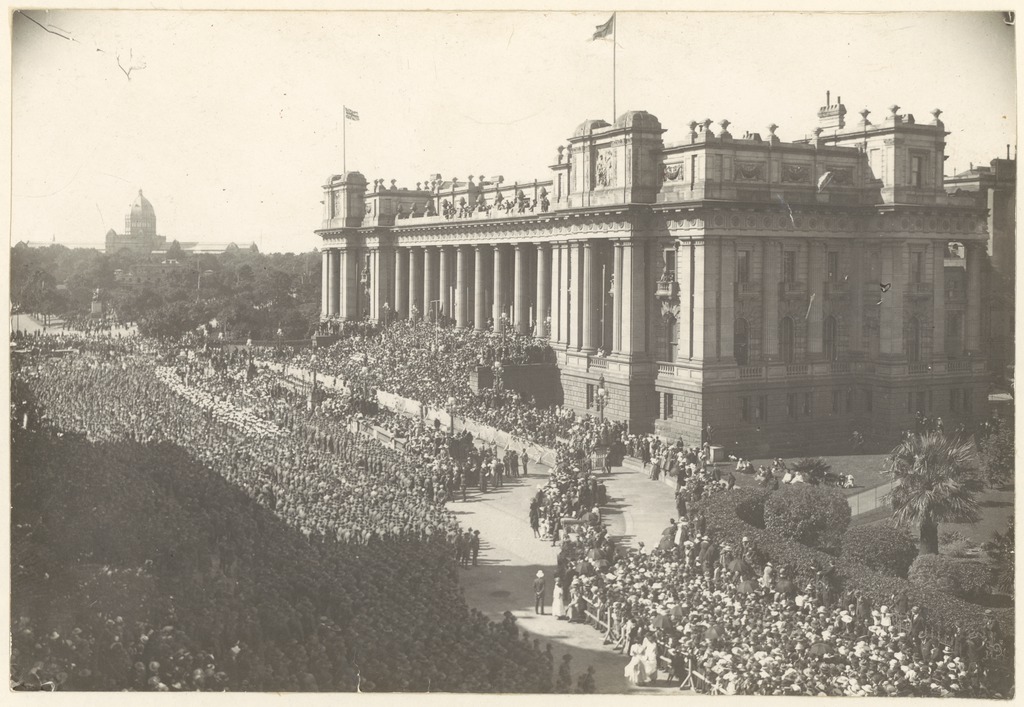The Old Treasury Building played a small but significant role in the turmoil surrounding conscription. From Federation in 1901 until 1927 Melbourne hosted the Government of Australia. The Victorian Government graciously allowed the newly-created Australian Government to use its grand Parliament building, while it met in the Exhibition Building in Carlton. A request was made to use the Old Treasury Building too, but for some reason this was refused. Perhaps the Governor, Premier (Chief Secretary) and other ministers were loathe to forgo their rather splendid offices, although they did make office space available to the Governor General. He complained about the lack of comforts, particularly the cold in winter, and eventually they found him other quarters.
Despite refusing to cede use of the Old Treasury, the Government of Victoria evidently allowed the Australian Executive Government to use the formal Executive Council Chamber in the building. And so most of the early legislation of the Commonwealth of Australia was signed into law around the table that is still in use by the Victorian Executive today. This included the Military Service Referendum Act, 1916 (Cwlth), which was described as 'an Act to submit to a Referendum a question in relation to Military Service Abroad'. We can imagine the Prime Minister W.H. (Billy) Hughes outlining his conviction of the need for this legislation to the then Governor General, Rt. Hon. Sir Ronald Craufurd, GCMG, PC, before the Bill that had been so hotly debated in the caucus and Parliament was signed into law at the long table.
Protest and the Old Treasury Building
But the role of the Old Treasury Building did not end there. Along with Parliament, the Old Treasury had long been a gathering place for public demonstrations and for formal deputations to government ministers, and while that role diminished during Melbourne's years as national capital, it did not cease entirely. Many a protest meeting gathered strength in the Treasury Gardens, before marching past the Treasury Building towards Parliament. Adela Pankhurst marched her food demonstrators along this route, singing their protest songs, in August 1917, although luckily no bricks seem to have found their way through Old Treasury windows on that occasion. Perhaps it was too well guarded, but from its lofty height at the apex of Collins Street, the Old Treasury Building was witness to the ensuing confrontation with the police, and the systematic window smashing that followed.
Peace at last
When the Armistice came finally in November 1918 the Old Treasury Building was again witness to extraordinary scenes. Crowds filled the open spaces before the Parliament Building for the official Armistice celebration and extended far down Spring Street past the Old Treasury. The Victory Parade that followed took a well-established route, down Spring Street once again towards the Parliament.

